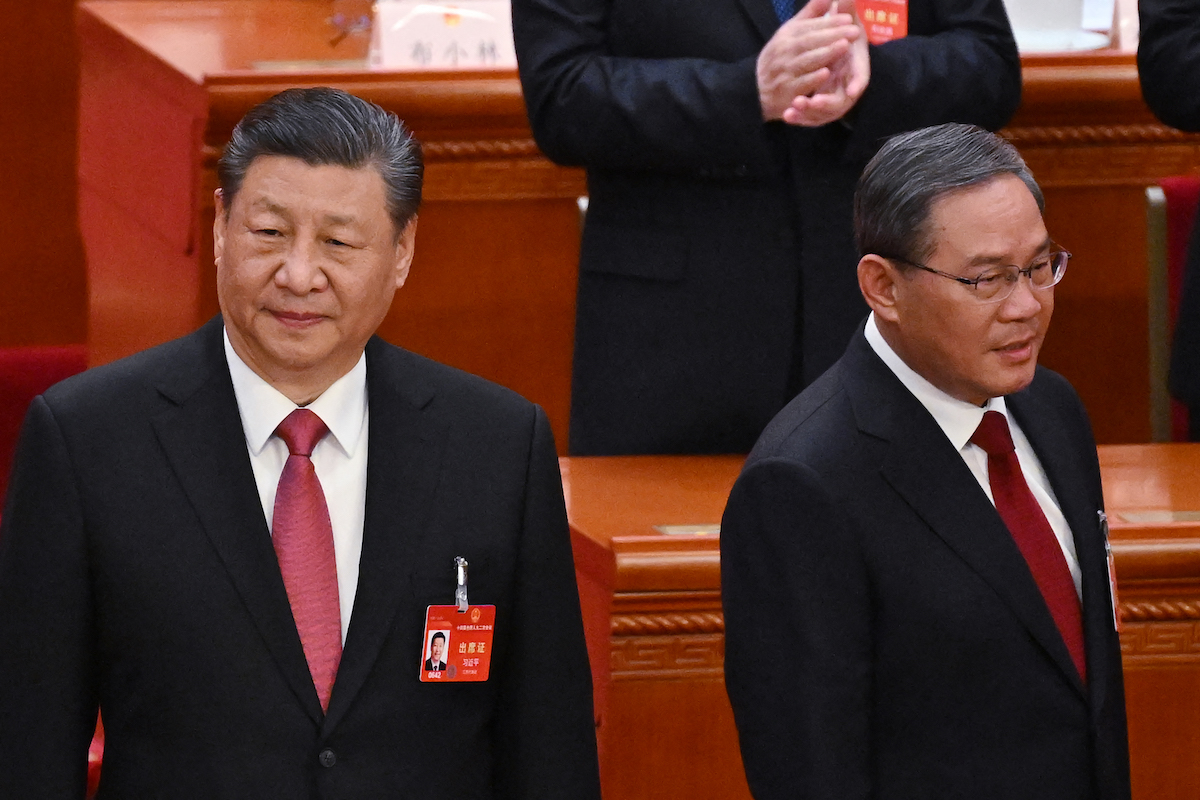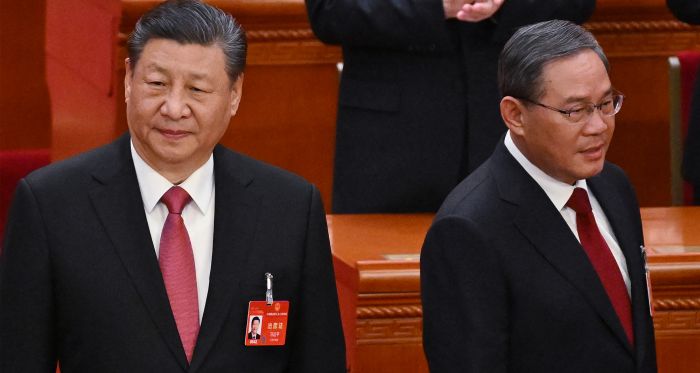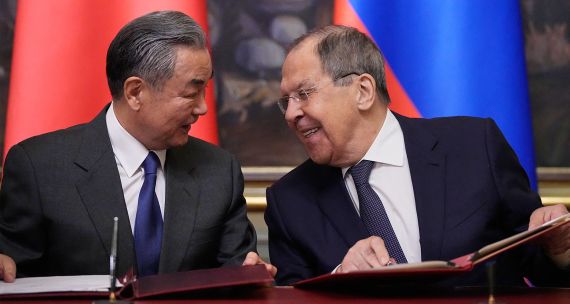One of the most significant announcements emerging from China’s ‘Two Sessions’ meetings in March was a re-energized commitment by the central government to achieve global supremacy and self-sufficiency in key high-tech industries.
In presenting his annual work report, Chinese Premier Li Qiang highlighted among his top priorities the phrase “new productive forces” as the main driver of the next phase of China’s economic growth.
In brief, the concept signals a state-led, national-scale industrial modernization program. While implementation will face both domestic and international challenges, there is a strong precedent for the success of such policies, namely, the ‘Made in China 2025’ campaign, which helped launch China’s electric vehicle (EV) industry into its current position of global dominance and moved the country up the global innovation index.
Canadian governments and businesses should thus pay close attention to how China’s “new productive forces” agenda is implemented, including possible issues with excess capacity and dumping, and what actions other governments might take in response.
What is meant by ‘new productive forces’?
The concept of new productive forces encompasses three broad policy areas: upgrading China’s industrial supply chains, nurturing its emerging and future industries, and making its digital economy more innovative. More specifically, it will help China solidify its advantages in EVs and solar panel manufacturing and accelerate progress in other frontier sectors such as hydrogen power, new materials (i.e. newly developed production materials, such as advanced composites materials that have enhanced properties and superior performance), biomanufacturing, life sciences, commercial aviation, and quantum technology.

The concept is meant to help the Chinese economy transition away from its earlier growth models, which prioritized high rates of growth and relied on sectors such as real estate and capital and labour-intensive exports. The new model is one in which economic growth is slower but also more sustainable and focused on gaining an edge in high-tech, high-value sectors like smart manufacturing, cutting-edge semiconductors, next-generation communications, and artificial intelligence (AI).
What might this new industrial policy mean for China’s private sector?
Beijing has recently indicated that it is trying to reassure its private sector, suggesting that private businesses will get the same access to state resources as state-owned enterprises (SOEs). The central government wants privately-owned companies to play a leading role in innovation.
As an example of the Chinese private sector’s perspective, Xiaomi founder Lei Jun has expressed concerns about a lack of access to financial and human resources in the smart manufacturing industry. He has also advocated for better integrating advanced technologies and large-scale industrial models into the country’s manufacturing sector, as well as giving leading companies like his a bigger role in tackling the technological ‘chokepoints,’ such as designing and making high-end chips.
Achieving national autonomy in cutting-edge technologies and nurturing homegrown innovations, a core theme of China’s drive towards technological supremacy, was reflected in the calls by several delegates at the Two Sessions to develop indigenous chips and train large language models (LLMs) to gain an advantage in the global market for semiconductors and AI. In fact, a three-year action plan launched in April seeks to accelerate the development of a digital workforce, possibly reflecting the central government’s responsiveness to the Chinese private sector’s concerns.
These companies may take comfort in some of the results of the ‘Made in China 2025’ campaign. While many Western governments ignored or failed to grasp the campaign’s effectiveness, it gave China’s EV companies a jumpstart in 2015 with state support. These EV brands, such as BYD, Nio, and XPeng, are now global leaders in the sector and have developed technologies that can compete with Tesla. It was also during the ‘Made in China 2025’ decade that China made the transition from a low-cost, labour-intensive, and component-based factory economy to a full-spectrum producer of other sophisticated industrial goods that now claim a significant share of the global supply chain. Solar photovoltaic manufacturing is one example over which China now has a near-monopoly through its production of solar panels, cells, and wafers.
Canada and other economies seeking to compete in such high-tech sectors will want to monitor how their own development of high-tech industries could be impacted by China’s new productive forces plan. Ottawa’s recent announcement of a C$2.4-billion package to boost Canada’s advantage in AI, especially its focus on accelerating the commercialization and application of the technologies in critical sectors, is the type of policy action that will be needed.
What domestic hurdles will the ‘new productive forces’ policy face?
Although the new productive forces plan has the full backing of China’s central government, including a 10 per cent increase in the state budget allocation for science and technology, implementation will face at least three domestic hurdles.
The first is the need to avoid industrial overcapacity. Once again, the ‘Made in China 2025’ campaign is instructive, albeit as a cautionary tale. During that campaign, local bureaucrats rushed to prop up industrial parks for what they viewed as ‘cutting-edge’ sectors, but often failed to make these investments productive.
Perhaps in an effort to avoid repeating these mistakes, Chinese President Xi Jinping, in one elaboration on the new productive forces, called for selective, condition-based decision-making, whereby regional governments act more prudently in deciding on what to invest in and avoiding creating industry ‘bubbles’ — that is, expanding at a pace too rapid to be sustainable. In other words, provincial and city leaders will have to abandon their single-minded pursuit of short-term economic results and politically oriented performance indicators, instead prioritizing patience and making investments that will help them scale the productivity ladder.
The second — and related — hurdle is that many of these subnational governments, which are responsible for a large percentage of their budgetary spending, are deeply in debt after the COVID-19 pandemic drained their finances. Many of these local governments will find it difficult to make capital injections into local industry at the same level as before.
The much celebrated ‘Hefei model,’ which turned a low-key eastern city into a beacon of high-tech manufacturing with sizable EV and display screen productions, was made possible largely because the city government pumped funds into local companies that were struggling to survive. In addition, Hefei’s resources — much like in many other Chinese cities — will likely be constrained by the shrinking local housing market. As many of China’s property developers become more cash-strapped and less willing to lease land from their local authorities, it could jeopardize what had been a key source of revenue for local governments.
The third hurdle is that the effectiveness of China’s new tech playbook could depend on its compatibility with other pressing policy issues, such as youth unemployment. As of March 2024, the unemployment rate for Chinese youth remained stuck at 15.3 per cent, even after a statistical revamp in how the rate is calculated was expected to produce a more flattering number. In the past, the services sector accounted for the lion’s share of China’s job growth. This sector would normally absorb not only new graduates, but also some of those who are being displaced from the sagging property sector. Instead, a focus on higher-end manufacturing, a linchpin of the new productive forces, favours automation and thus is not likely to produce a significant number of new jobs.
In addition, the concern about AI and robotics replacing workers — a concern very much shared in the developed world, including in Canada — has prompted experts in China to propose giving more policy support to the gig-work sector and self-employed workers, including the once heavily-regulated street stalls, to cushion the blow of automation.
What international challenges will the plan face?
China’s new development philosophy will face challenges beyond its borders. Washington and Brussels have been stepping up their efforts to keep Chinese EVs out of their markets, and the next generation of Chinese tech high-flyers could face a similar backlash. The European Commission’s anti-subsidy investigation of China’s ‘new energy’ cars, launched in 2023, could lead to punitive tariffs against China if the European Commission rules that China’s battery electric vehicle (BEV) supply chain benefits from illegal subsidies and is harmful to Europe’s BEV producers. China has lodged its own complaint with the World Trade Organization on what it regards as a “double standard” and discriminatory moves through the U.S.’s Inflation Reduction Act.
Chinese industrial overcapacity — which, as noted above, often results from over-investment and inefficient use of resources — is already hitting several industries. For example, in solar manufacturing, the total capacity of China’s photovoltaic producers is more than three times what China’s domestic market can absorb. Sending the excess supply abroad will likely make governments in the West push back harder when they detect signs of dumping.
The U.S. and many of its allies have also become much more concerned about data and security, which has dampened their enthusiasm for embracing China as a trading partner and prompted them to put controls over tech exports in place. These countries are concerned about the economic and military domains in China becoming increasingly integrated, and are seeing such integration and Beijing’s fostering of cutting-edge innovations as a possible threat to their national security. These concerns are prompting calls for governments to take defensive measures against China.
In brief, the success of China’s new productive forces plan rests on its ability to improve and increase productivity and efficiency in both the manufacturing and services sectors. The country’s top leaders seem to have little appetite for a conventional consumption-oriented stimulus, opting instead for creating an industry-propelled high-skilled, high-income workforce that naturally becomes wealthier.
This vision will not materialize, however, in a vacuum. Demand-side stimulus will need to catch up and increase people’s disposable income. In addition, a stronger social safety will need to be put in place to avoid bigger problems in the longer run.
On one hand, the new productive forces and the policies enacted to support it can inject fresh hope in the Chinese economy and help to restore the confidence of China’s private sector. On the other hand, the success of this approach will hinge on domestic factors and how China fares in an increasingly competitive global landscape.
• Editors: Erin Williams, APF Canada Senior Program Manager; Vina Nadjibulla, APF Canada Vice-president, Research & Strategy.





